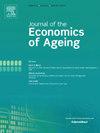按家庭结构对有偿和无偿工作的性别差距进行生命周期分析
IF 2
3区 经济学
Q2 DEMOGRAPHY
引用次数: 0
摘要
这篇论文对男性和女性对整体经济和社会福祉的终身贡献提供了新的见解,同时考虑了市场和非市场活动。它扩展了国家转移帐户和国家时间转移帐户方法,将家庭结构- -特别是伙伴关系和父母身份- -纳入分析。以西班牙为例,研究结果表明,需要考虑家庭特征,以充分了解经济生产的性别模式。定义了三个综合指标,使人们能够对有据可查的性别差距有新的认识。有趣的是,这种差距在单身女性(单身女性花更多的时间做家务)中已经存在,在没有孩子的夫妇(由于劳动分工)中得到强化,在有孩子的情况下最为明显。在家庭慷慨度指标中可以看到,后一个维度也显示了一个相当大的“父母差距”的存在。在人口加速老龄化的背景下,解决这两个差距尤为紧迫,因为它对生育、护理提供和代际支持具有潜在影响。本文章由计算机程序翻译,如有差异,请以英文原文为准。
Lifecycle analysis of the gender gap in paid and unpaid work by household structure
The paper provides new insights into men and women’s lifetime contributions to the overall economy and societal well-being, taking both market and non-market activities into account. It extends the National Transfer Accounts (NTA) and National Time Transfer Accounts (NTTA) methodologies by including household structure – specifically, partnership and parenthood status – in the analysis. Using Spain as a case study, the results reveal the need to consider family characteristics to fully understand gendered patterns of economic production. Three synthetic indicators are defined that permit new insights concerning the well-documented gender gap. Interestingly, this gap is already present in singles (single women spend more time doing housework), reinforced in childless couples (by the division of labour) and most apparent when children are present. Visible in the indicator of family generosity, the latter dimension also shows the existence of a sizeable ‘parenthood gap’. Addressing both gaps is particularly urgent in the context of accelerated population ageing given the potential implications it holds for fertility, care provision, and intergenerational support.
求助全文
通过发布文献求助,成功后即可免费获取论文全文。
去求助
来源期刊

Journal of the Economics of Ageing
Multiple-
CiteScore
4.10
自引率
4.50%
发文量
46
审稿时长
49 days
期刊介绍:
The Journal of the Economics of Ageing (JEoA) is an international academic journal that publishes original theoretical and empirical research dealing with the interaction between demographic change and the economy. JEoA encompasses both microeconomic and macroeconomic perspectives and offers a platform for the discussion of topics including labour, health, and family economics, social security, income distribution, social mobility, immigration, productivity, structural change, economic growth and development. JEoA also solicits papers that have a policy focus.
 求助内容:
求助内容: 应助结果提醒方式:
应助结果提醒方式:


